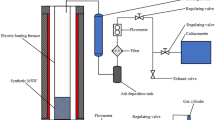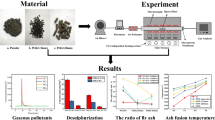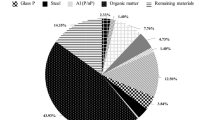Abstract
Combustion behaviour of municipal solid waste bales is a rarely studied topic hitherto. However, there is dire need to devote research on the topic because baling as a storage methodology is getting popular among waste management companies and fire episodes in such storage sites can have devastating economic, environmental and social implications. In this study, thickness of low density polyethylene (LDPE) plastic sheets (12 layers, 6 layers and no layer) and type of ignition source (pilot ignition, thermal radiation) were investigated to see their effect on combustion behaviour of bales. In total eleven tests with a single bale in each test were performed. It has been found that the bales not wrapped with LDPE plastic sheets may pose higher hazards for adjacently stored material to catch fire as the value of maximum heat release rate observed for them was higher than those wrapped with LDPE plastic sheets. Furthermore, it has been found that LDPE plastic wrapping do not contribute significantly to the combustion of bales when exposed only to thermal radiation from an adjacent fire. However, it plays a significant role in ignition of bales in case exposed to a pilot flame ignition source. Molten LDPE plastic trapped between the adjacently stored bales was found to be another important factor influencing the combustion of bales.












Similar content being viewed by others
References
Li XR, Koseki H, Momota M (2006) Evaluation of danger from fermentation-induced spontaneous ignition of wood chips. J Hazard Mater A135: 15–20
Fu ZM, Koseki H, Iwata Y (2006) Investigation on spontaneous ignition of two kinds of organic material with water. Thermochim Acta 440: 68–74
Ibrahim MA, Alriksson S, Kaczala F, Hogland W (2013) Fires at storage sites of organic materials, waste fuels and recyclables. Waste Manag Res. doi: 10.1177/0734242X13487581
Krook J, Svensson N, Eklund M (2012) Landfill mining—a critical review of two decades of research. Waste Manag 32: 513–520
Nammari RD, Hogland W (2003) Storage of municipal solid waste: a walk through history and an outlook into the future. In: 8th Polish-Danish workshop on biomass for energy, Starbienino, Gdansk University of Technology, Gdansk, June 12–15, pp 85–94
Nammari RD, Hogland W, Moutavtchi V, Marques M, Nimmermark S (2003) Physical and chemical processes in baled waste fuel, with emphasis on gaseous emissions. Waste Manag Res 21:309–317
Milanovic Z, Radovic S (2004) Baling system and growth of waste energy efficiency. In: 19th international congress on energy and environment, Opatija, Croatia, vol 1, pp 253–260
Belgiorno V, Panza D (2009) Solid waste management system: an impressive case study. In: 5th international conference on urban regeneration and sustainability, Skiathos IsI, Greece, Sep 24–26, vol 117, pp 715–724
Stenis J, Hogland W, (2011) Fire in waste-fuel stores: risk management and estimation of real cost. J Mater Cycle Waste Manag 13: 247–258
Nammari RD, Hogland W, Marques, M, Nimmermark S, Moutavtchi, V (2004) Emissions from a controlled fire in municipal solid waste bales. Waste Manag 24: 9–18
Markidis L, Komilis D, Tsagas F, Petalas A (2013) A fractional factorial field experiment to study the decomposition of municipal solid wastes stored in wrapped bales. J Environ Manag 115:32–41
Ozbay I, Durmusoglu E (2012) Temporal variation of decomposition gases from baled municipal solid wastes. Bioresour Technol 112:105–110
Nammari RD, Marques M, Thörneby L, Hogland W, Mathiasson L, Mårtensson L (2007) Emissions from baled municipal solid waste: I. Methodological approach for investigation of gaseous emissions. Waste Manag Res 25:39–48
Nammari RD, Marques M, Hogland W, Mathiasson L, Thörneby L, Mårtensson L (2007) Emissions from baled municipal solid waste: II. Effects of different treatments and baling techniques on the emission of volatile organic compounds. Waste Manag Res 25:109–118
Robles-Martinez F, Gourdon R (1999) Effect of baling on the behaviour of domestic wastes: Laboratory study on the role of PH in biodegradation. Bioresour Technol 69:15–22
Robles-Martinez F, Gourdon R (2000) Long-term behaviour of baled household waste. Bioresour Technol 72:125–130
Lönnermark A, Blomqvist P, and Marklund S (2008) Emissions from simulated deep-seated fires in domestic waste. Chemosphere 70:626–639
Tillander K, Rinne T (2010) Assessment of environmental effects of simulated fires in waste recycling centres. In: Proceedings of the 12th international fire science and engineering conference INTERFLAM, East midlands conference centre, University of Nottingham, 5–7 July, pp 1387–1398
El-Fadel M, Bou-Zeid B, Chahine W, Alayli B (2002) Temporal variation of leachate quality from pre-sorted and baled municipal solid waste with high organic and moisture content. Waste Manag 22:269–282
Baldasano JM, Gasso S, Perez C (2003) Environmental performance review and cost analysis of MSW landfilling by baling-wrapping technology versus conventional system. Waste Manag 23:795–806
Flexus (2013) Flexus Balasystem AB. http://www.flexus.se/showartikel.asp?id=3. Accessed 15 Aug 2013
NTFIRE049 (2005) Combustible products: commodity classification-fire test procedure, Nordic Innovative centre, Project-1654-04, ISSN 1459-2819. http://www.sp.se/sv/units/fire/Documents/Skydd/NTmethod049.pdf. Accessed 22 July 2013
Häggkvist A (2009) The plate thermometer as a mean of calculating incident heat radiation-A practical and theoretical study. MSc Thesis, Department of Civil, Mining and Environmental Engineering, Luleå University, Luleå, Sweden
Häggkvist A, Sjöström J, Wickström U (2012) Using plate thermometer measurements to calculate incident heat radiation. J Fire Sci 31:166–177
Lyon RE, Quintiere JG (2007) Criteria for piloted ignition of combustible solids. Combust Flame 151:551–559
Axelsson J, Andersson P, Lönnermark A, Van-Hees P, Wetterlund I (2001) Uncertainties in measuring heat and smoke release rates in the room/corner test and the SBI, Nordtest Technical Report 477, Nordtest Project No. 1480-00, Swedish National Testing and Research Institute, Borås, Sweden.
Gratkowski M T (2012) Burning characteristics of automotive tires. Fire Technol. doi: 10.1007/s10694-012-0274-9
USEPA (1995) Solid waste disposal, AP42 Compilation of air pollutant emission factors, stationary point and area sources, 5th edn, vol 1. U.S. Environmental Protection Agency, Washington, DC. http://www.epa.gov/ttn/chief/ap42/index.html. Accessed 16 Aug 2012
Acknowledgments
The authors gratefully acknowledge VINNOVA which has made the test financially possible as a part of the project “Integrated Waste Management Technology for Effective Biogas Production” and in particular Dr. Ciro Vasquez for his assistance in the main project. Furthermore, Peter Svensson, Flexus Balasystem AB, in his support in the bailing process and Marika Hogland, LundaHydro AB and Linnaeus University, for her help on site in the bailing and planning of incineration test. Finally SP for opening their laboratory and technicians at SP making necessary measurement equipment available for the incineration test.
Author information
Authors and Affiliations
Corresponding author
Rights and permissions
About this article
Cite this article
Ibrahim, M.A., Appel, G., Lönnermark, A. et al. Combustion Characteristics of Municipal Solid Waste Bales. Fire Technol 51, 109–127 (2015). https://doi.org/10.1007/s10694-013-0362-5
Received:
Accepted:
Published:
Issue Date:
DOI: https://doi.org/10.1007/s10694-013-0362-5




